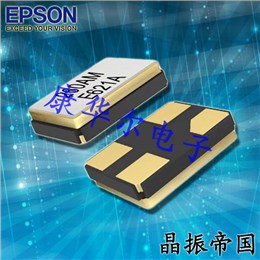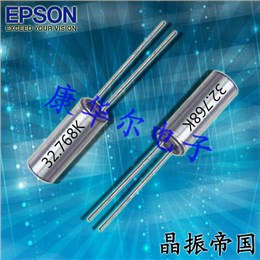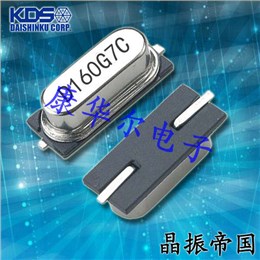Cardinal Oscillator Crystal解决方案,美国知名元器件供应商Cardinal公司,主要向世界各地提供低功耗低成本的石英晶振产品为主,随着自身的技术增长,Cardinal公司开始追寻自身伟大的目标,致力于为用户提供具有核心竞争力的产品,以及提供优质的产品为主要目标,同时在选择上面拥有超级灵活性和多元化,使得用户可以随时在Cardinal公司找到自身理想的产品,以及满意的解决方案,也因此更多用户选择与之建立良好的合作关系。
在开发电子组件时,其中一个步骤包括选择合适的频率控制产品。开始时的基本问题是安装石英晶体还是振荡器。为了做出正确的决定,需要考虑几个参数。这些包括应用、设备或行业的许多不同要求。除了空间要求、频率稳定性和专业知识之外,开发成本也起着重要作用。
石英晶体还是SPXO晶体振荡器?这就是问题所在!在下文中,我们将更深入地了解一个组件或另一个组件是更好选择的情况:
当石英晶体是正确的选择时
“答石英晶体最适合开发人员想要构建自己的电子振荡器,允许他们调整或优化所有相关参数的时候。这当然需要一定的努力:电子振荡器必须构建并适应谐振器,以确保在整个工作温度范围内的振荡稳定性和凝聚力,”产品经理解释道。例如,电路元件包括电容器,必须选择电容器,以便实现石英晶体的特定负载能力。如果不是这种情况,可能会出现与额定频率相当大的偏差。因此,必须事先明确定义石英晶体的规格,以避免频率偏差。
然而,由于石英晶体比晶体振荡器便宜,所以它们是更大数量的更好选择。此外,电路板上必须有足够的空间:带电路的压电晶体比晶体振荡器需要更多的空间。
完美协调的完整解决方案:晶体振荡器
当使用振荡器内部安装电路的所有元件已经完全匹配。与带电路的石英晶体相比,振荡器通常占用更少的空间。振荡器总是包含一个频率控制元件,在我们的例子中是一个石英晶体。这是插入到皮尔斯电路,导致石英晶体振荡器。Cardinal Oscillator Crystal解决方案.
振荡器电路
因此,有源晶体振荡器是最节省空间的选择:一切都很紧凑,内置在一个组件中,开发人员不必围绕压电晶体设计电路。该元件特别适用于小批量生产,因为它消除了耗时的电路元件优化和调谐的需要。
振荡器的另一个优点是,当使用石英晶体时,面积与厚度之比不能低于某个值。如果不保持这个比例,它将对电参数产生负面影响。这意味着低频(10MHz以下)不再能在更小的设计中处理。这一限制不适用于振荡器,因为振荡器内部有一个IC。这同样适用于频率更高的电路,石英晶体也能更快地达到其物理极限。由于内置IC,还可以通过温度进行补偿(TCXOs)。这允许开发者有更多的操作空间,以满足相应应用程序及其外部影响的要求。这种偏差还允许±0.05ppm的频率稳定性。最好的情况下,石英晶体的含量低于百万分之+-10。Cardinal Oscillator Crystal解决方案.
In developing an electronic assembly, one of the steps involved includes choosing the appropriate frequency control product. The basic question at the outset is whether to install a quartz crystal or an oscillator. To reach the right decision, several parameters need to be considered. These include the many different requirements of the application, the device, or the industry. In addition to space requirements, frequency stability, and expertise, development costs also play a notable role.
原厂代码
晶振厂家
描述n
系列
Type 类型
Frequency 频率
Output 输出
Frequency Stability频率稳定度
CPPC5L-A7BR-66.0PD
Cardinal Components Inc.
OSC XO 66.000MHZ CMOS SMD
FIPO™ CPP
XO (Standard)
66MHz
CMOS
±25ppm
CPPC5L-A7BR-66.0TS
Cardinal Components Inc.
OSC XO 66.000MHZ CMOS SMD
FIPO™ CPP
XO (Standard)
66MHz
CMOS
±25ppm
CPPC5Z-A7BR-4.0TS
Cardinal Components Inc.
OSC XO 4.000MHZ CMOS SMD
FIPO™ CPP
XO (Standard)
4MHz
CMOS
±25ppm
CPPC5L-A7BR-69.102PD
Cardinal Components Inc.
OSC XO 69.102MHZ CMOS SMD
FIPO™ CPP
XO (Standard)
69.102MHz
CMOS
±25ppm
CPPC5L-BR-125.0TS
Cardinal Components Inc.
OSC XO 125.000MHZ CMOS SMD
FIPO™ CPP
XO (Standard)
125MHz
CMOS
±25ppm
CPPC5LT-A7BR-48.0TS
Cardinal Components Inc.
OSC XO 48.000MHZ CMOS SMD
FIPO™ CPP
XO (Standard)
48MHz
CMOS
±25ppm
CPPC5-A5BP-125.0TS
Cardinal Components Inc.
OSC XO 125.000MHZ CMOS SMD
FIPO™ CPP
XO (Standard)
125MHz
CMOS
±50ppm
CPPC5LZ-A7BP-100.0TS
Cardinal Components Inc.
OSC XO 100.000MHZ CMOS SMD
FIPO™ CPP
XO (Standard)
100MHz
CMOS
±50ppm
CPPC5-A7BP-108.0TS
Cardinal Components Inc.
OSC XO 108.000MHZ CMOS SMD
FIPO™ CPP
XO (Standard)
108MHz
CMOS
±50ppm
CPPC5LZ-A7BP-14.318PD
Cardinal Components Inc.
OSC XO 14.318MHZ CMOS SMD
FIPO™ CPP
XO (Standard)
14.318MHz
CMOS
±50ppm
CPPC5L-A5BR-108.0TS
Cardinal Components Inc.
OSC XO 108.000MHZ CMOS SMD
FIPO™ CPP
XO (Standard)
108MHz
CMOS
±25ppm
CPPC7-A5BD-40.0TS
Cardinal Components Inc.
OSC XO 40.000MHZ CMOS SMD
FIPO™ CPP
XO (Standard)
40MHz
CMOS
±60ppm
CPPC7-A5BP-32.106TS
Cardinal Components Inc.
OSC XO 32.106MHZ CMOS SMD
FIPO™ CPP
XO (Standard)
32.106MHz
CMOS
±50ppm
CPPC7-A5BP-5.0TS
Cardinal Components Inc.
OSC XO 5.000MHZ CMOS SMD
FIPO™ CPP
XO (Standard)
5MHz
CMOS
±50ppm
CPPC7-A5BR-27.0PD
Cardinal Components Inc.
OSC XO 27.000MHZ CMOS SMD
FIPO™ CPP
XO (Standard)
27MHz
CMOS
±25ppm
CPPC7-A7B6-11.0592TS
Cardinal Components Inc.
OSC XO 11.0592MHZ CMOS SMD
FIPO™ CPP
XO (Standard)
11.0592MHz
CMOS
±100ppm
CPPC7-A7B6-14.7456TS
Cardinal Components Inc.
OSC XO 14.7456MHZ CMOS SMD
FIPO™ CPP
XO (Standard)
14.7456MHz
CMOS
±100ppm
CPPC7-A7B6-2.176TS
Cardinal Components Inc.
OSC XO 2.176MHZ CMOS SMD
FIPO™ CPP
XO (Standard)
2.176MHz
CMOS
±100ppm
CPPC5-A7BP-110.0TS
Cardinal Components Inc.
OSC XO 110.000MHZ CMOS SMD
FIPO™ CPP
XO (Standard)
110MHz
CMOS
±50ppm
CPPC7-A7B6-20.0TS
Cardinal Components Inc.
OSC XO 20.000MHZ CMOS SMD
FIPO™ CPP
XO (Standard)
20MHz
CMOS
±100ppm
CPPC7-A7B6-32.0TS
Cardinal Components Inc.
OSC XO 32.000MHZ CMOS SMD
FIPO™ CPP
XO (Standard)
32MHz
CMOS
±100ppm
CPPC7-A7B6-40.0TS
Cardinal Components Inc.
OSC XO 40.000MHZ CMOS SMD
FIPO™ CPP
XO (Standard)
40MHz
CMOS
±100ppm
CPPC7-A7BP-1.0TS
Cardinal Components Inc.
OSC XO 1.000MHZ CMOS SMD
FIPO™ CPP
XO (Standard)
1MHz
CMOS
±50ppm
CPPC7-A7BP-10.0TS
Cardinal Components Inc.
OSC XO 10.000MHZ CMOS SMD
FIPO™ CPP
XO (Standard)
10MHz
CMOS
±50ppm
CPPC5LZ-A7BP-50.0TS
Cardinal Components Inc.
OSC XO 50.000MHZ CMOS SMD
FIPO™ CPP
XO (Standard)
50MHz
CMOS
±50ppm
CPPC7-A7BP-11.0592TS
Cardinal Components Inc.
OSC XO 11.0592MHZ CMOS SMD
FIPO™ CPP
XO (Standard)
11.0592MHz
CMOS
±50ppm
CPPC7-A7BP-14.0TS
Cardinal Components Inc.
OSC XO 14.000MHZ CMOS SMD
FIPO™ CPP
XO (Standard)
14MHz
CMOS
±50ppm
CPPC7-A7BP-14.7456TS
Cardinal Components Inc.
OSC XO 14.7456MHZ CMOS SMD
FIPO™ CPP
XO (Standard)
14.7456MHz
CMOS
±50ppm
CPPC7-A7BP-149.86TS
Cardinal Components Inc.
OSC XO 149.86MHZ CMOS SMD
FIPO™ CPP
XO (Standard)
149.86MHz
CMOS
±50ppm
CPPC7-A7BP-2.0TS
Cardinal Components Inc.
OSC XO 2.000MHZ CMOS SMD
FIPO™ CPP
XO (Standard)
2MHz
CMOS
±50ppm
CPPC5LZ-A7BP-88.888PD
Cardinal Components Inc.
OSC XO 88.888MHZ CMOS SMD
FIPO™ CPP
XO (Standard)
88.888MHz
CMOS
±50ppm
CPPC7-A7BP-20.0TS
Cardinal Components Inc.
OSC XO 20.000MHZ CMOS SMD
FIPO™ CPP
XO (Standard)
20MHz
CMOS
±50ppm
CPPC5L-A7BR-25.0TS
Cardinal Components Inc.
OSC XO 25.000MHZ CMOS SMD
FIPO™ CPP
XO (Standard)
25MHz
CMOS
±25ppm
CPPC5LZ-A7BR-20.0TS
Cardinal Components Inc.
OSC XO 20.000MHZ CMOS SMD
FIPO™ CPP
XO (Standard)
20MHz
CMOS
±25ppm
CPPC5L-A7BR-58.9824PD
Cardinal Components Inc.
OSC XO 58.9824MHZ CMOS SMD
FIPO™ CPP
XO (Standard)
58.9824MHz
CMOS
±25ppm
CPPC5L-A7BR-62.208PD
Cardinal Components Inc.
OSC XO 62.208MHZ CMOS SMD
FIPO™ CPP
XO (Standard)
62.208MHz
CMOS
±25ppm
CPPC5Z-A7BR-20.0TS
Cardinal Components Inc.
OSC XO 20.000MHZ CMOS SMD
FIPO™ CPP
XO (Standard)
20MHz
CMOS
±25ppm
CPPC5L-A7BR-69.12PD
Cardinal Components Inc.
OSC XO 69.12MHZ CMOS SMD
FIPO™ CPP
XO (Standard)
69.12MHz
CMOS
±25ppm
CPPC5L-A7BR-77.76PD
Cardinal Components Inc.
OSC XO 77.76MHZ CMOS SMD
FIPO™ CPP
XO (Standard)
77.76MHz
CMOS
±25ppm
CPPC5L-B6-97.030887TS
Cardinal Components Inc.
OSC XO 97.030887MHZ CMOS SMD
FIPO™ CPP
XO (Standard)
97.030887MHz
CMOS
±100ppm
CPPC5LZ-A5BP-41.6665TS
Cardinal Components Inc.
OSC XO 41.6665MHZ CMOS SMD
FIPO™ CPP
XO (Standard)
41.6665MHz
CMOS
±50ppm
CPPC5L-A7B6-20.0TS
Cardinal Components Inc.
OSC XO 20.000MHZ CMOS SMD
FIPO™ CPP
XO (Standard)
20MHz
CMOS
±100ppm
CPPC7L-BR-26.0PD
Cardinal Components Inc.
OSC XO 26.000MHZ CMOS SMD
FIPO™ CPP
XO (Standard)
26MHz
CMOS
±25ppm
CPPC7LZ-A7BR-24.0TS
Cardinal Components Inc.
OSC XO 24.000MHZ CMOS SMD
FIPO™ CPP
XO (Standard)
24MHz
CMOS
±25ppm
CPPC7LZ-A7BP-10.0TS
Cardinal Components Inc.
OSC XO 10.000MHZ CMOS SMD
FIPO™ CPP
XO (Standard)
10MHz
CMOS
±50ppm
CPPC7L-BR-30.0TS
Cardinal Components Inc.
OSC XO 30.000MHZ CMOS SMD
FIPO™ CPP
XO (Standard)
30MHz
CMOS
±25ppm
CPPC7LZ-A7BR-83.333TS
Cardinal Components Inc.
OSC XO 83.333MHZ CMOS SMD
FIPO™ CPP
XO (Standard)
83.333MHz
CMOS
±25ppm
CPPC7Z-A7B6-20.0TS
Cardinal Components Inc.
OSC XO 20.000MHZ CMOS SMD
FIPO™ CPP
XO (Standard)
20MHz
CMOS
±100ppm
CPPC7LZ-A7BR-27.002TS
Cardinal Components Inc.
OSC XO 27.002MHZ CMOS SMD
FIPO™ CPP
XO (Standard)
27.002MHz
CMOS
±25ppm
CPPC7LZ-A7BR-27.0TS
Cardinal Components Inc.
OSC XO 27.000MHZ CMOS SMD
FIPO™ CPP
XO (Standard)
27MHz
CMOS
±25ppm
CPPC7LZ-A7BP-22.4TS
Cardinal Components Inc.
OSC XO 22.40MHZ CMOS SMD
FIPO™ CPP
XO (Standard)
22.4MHz
CMOS
±50ppm
CPPC7LT-A7BP-1.8432TS
Cardinal晶振
OSC XO 1.8432MHZ CMOS SMD
FIPO™ CPP
XO (Standard)
1.8432MHz
CMOS
±50ppm
CPPC7LZ-A7BP-24.0TS
Cardinal Components Inc.
OSC XO 24.000MHZ CMOS SMD
FIPO™ CPP
XO (Standard)
24MHz
CMOS
±50ppm
CPPC7Z-A7B6-6.0TS
Cardinal Components Inc.
OSC XO 6.000MHZ CMOS SMD
FIPO™ CPP
XO (Standard)
6MHz
CMOS
±100ppm
CPPC7LZ-A7BR-29.4912TS
Cardinal Components Inc.
OSC XO 29.4912MHZ CMOS SMD
FIPO™ CPP
XO (Standard)
29.4912MHz
CMOS
±25ppm
CPPC7LZ-BP-11.3541TS
Cardinal Components Inc.
OSC XO 11.3541MHZ CMOS SMD
FIPO™ CPP
XO (Standard)
11.3541MHz
CMOS
±50ppm
CPPC7LT-A7BP-14.7456TS
Cardinal Components Inc.
OSC XO 14.7456MHZ CMOS SMD
FIPO™ CPP
XO (Standard)
14.7456MHz
CMOS
±50ppm
CPPC7L-BP-133.0TS
Cardinal Components Inc.
OSC XO 133.000MHZ CMOS SMD
FIPO™ CPP
XO (Standard)
133MHz
CMOS
±50ppm
CPPC7LZ-A5BP-32.0TS
Cardinal Components Inc.
OSC XO 32.000MHZ CMOS SMD
FIPO™ CPP
XO (Standard)
32MHz
CMOS
±50ppm
CPPC7L-BP-25.0PD
Cardinal Components Inc.
OSC XO 25.000MHZ CMOS SMD
FIPO™ CPP
XO (Standard)
25MHz
CMOS
±50ppm
CPPC7LZ-A7BR-33.3TS
Cardinal Components Inc.
OSC XO 33.3MHZ CMOS SMD
FIPO™ CPP
XO (Standard)
33.3MHz
CMOS
±25ppm
CPPC7LZ-BR-66.6666TS
Cardinal Components Inc.
OSC XO 66.6666MHZ CMOS SMD
FIPO™ CPP
XO (Standard)
66.6666MHz
CMOS
±25ppm
CPPC7LZ-A5BR-34.56TS
Cardinal Components Inc.
OSC XO 34.56MHZ CMOS SMD
FIPO™ CPP
XO (Standard)
34.56MHz
CMOS
±25ppm
CPPC7L-BP-4.0TS
Cardinal Components Inc.
OSC XO 4.000MHZ CMOS SMD
FIPO™ CPP
XO (Standard)
4MHz
CMOS
±50ppm
CPPC7LT-A7BP-5.0TS
Cardinal Components Inc.
OSC XO 5.000MHZ CMOS SMD
FIPO™ CPP
XO (Standard)
5MHz
CMOS
±50ppm
CPPC7LZ-A5BR-7.3728TS
Cardinal Components Inc.
OSC XO 7.3728MHZ CMOS SMD
FIPO™ CPP
XO (Standard)
7.3728MHz
CMOS
±25ppm
CPPC7LZ-A7BR-4.096TS
Cardinal Components Inc.
OSC XO 4.096MHZ CMOS SMD
FIPO™ CPP
XO (Standard)
4.096MHz
CMOS
±25ppm
CPPC7L-BP-4.194304TS
Cardinal Components Inc.
OSC XO 4.194304MHZ CMOS SMD
FIPO™ CPP
XO (Standard)
4.194304MHz
CMOS
±50ppm
Quartz crystal or oscillator? That is the question! In the following, we’ll take a closer look at situations when one component or the other is the better choice:
When a quartz crystal is the way to go
“Aquartz crystalis best suited when the developer wants to build their own electronic oscillator, allowing them to tune or optimize all the relevant parameters. This of course requires a certain amount of effort: The electronic oscillator has to be built and adapted to the resonator in order to ensure oscillation stability as well as cohesion over the entire operating temperature range,” explains Product Manager. Circuit components include, for example, capacitors, which must be selected so that the quartz crystal’s specific load capacity is achieved. If this is not the case, considerable deviations from the specified nominal frequency may occur. The specifications for the quartz crystal must therefore be clearly defined in advance to avoid frequency deviations.
However, since quartz crystals are less expensive than crystal oscillators, they are a better choice for larger quantities. In addition, there must be sufficient space on the circuit board: A piezoelectric crystal with circuitry requires more space than a crystal oscillator.
The perfectly coordinated complete solution: The crystal oscillator
When using anoscillator, all components of the internally installed circuitry are already perfectly matched. In contrast to a quartz crystal with circuit, the oscillator usually takes up less space. An oscillator always contains a frequency control component—in our case, an quartz crystal. This is inserted into the Pierce circuit, which causes the quartz crystal to oscillate.
Pierce circuitThe oscillator is therefore the most space-saving alternative: Everything is compact and built into one component, and the developer does not have to design a circuit around the piezoelectric crystal. The component is particularly suitable for low volumes because it eliminates the need for time-consuming optimization and tuning of circuit components.
Another advantage of the oscillator is that when using a quartz crystal, the ratio of area to thickness must not fall below a certain value. If this ratio is not maintained, it will have a negative effect on the electrical parameters. This means that low frequencies (below 10 MHz) can no longer be handled in smaller designs. This limitation does not apply to oscillators because they have an IC inside. The same applies to circuits with higher frequencies—here, too, quartz crystals reach their physical limits more quickly. Due to the internal IC, compensations via temperature are also possible (TCXOs). This allows the developer more room to maneuver in order to meet the requirements of the respective application and its external influences. This leeway also allows a frequency stability of +-0.05 parts per million. At best, quartz crystals are specified with just under +-10 parts per million.


 进口爱普生晶振FA-20H,Q24FA20H00005水晶振动子
进口爱普生晶振FA-20H,Q24FA20H00005水晶振动子 EPSON爱普生晶振C-2,Q12C20001000600水晶振动子
EPSON爱普生晶振C-2,Q12C20001000600水晶振动子 SMD-49无源谐振器,KDS日本晶体,1AJ250004B两脚无源晶振
SMD-49无源谐振器,KDS日本晶体,1AJ250004B两脚无源晶振